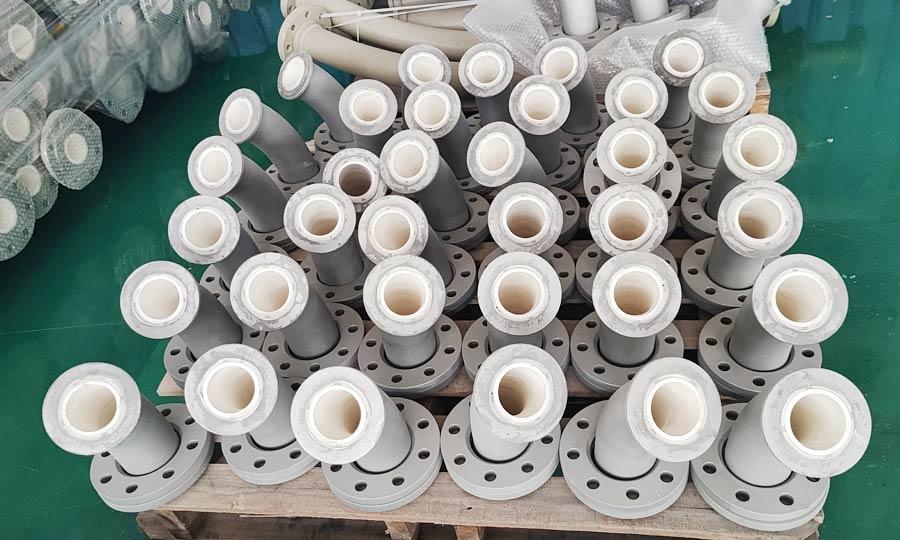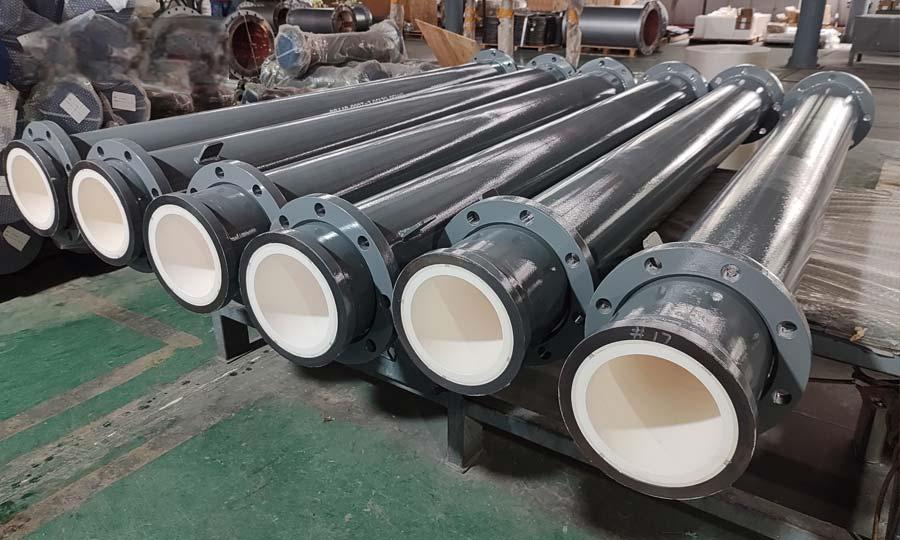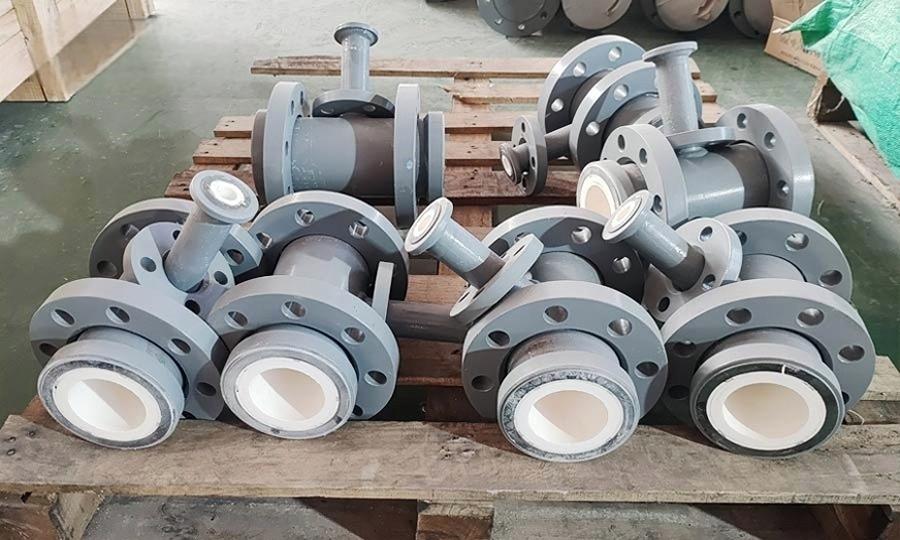Ceramic-Lined Steel Pipes: Manufacturing Process, Performance Advantages, and Broad Applications
Ceramic-lined steel pipes represent a significant innovation in industrial materials, combining the resilience and mechanical strength of steel with the high wear and corrosion resistance of ceramics. As a result, these pipes are becoming crucial in a range of demanding industrial environments, including mining, chemicals, power generation, and wastewater treatment. This article provides a comprehensive overview of the manufacturing process, key performance benefits, application areas, and future prospects of ceramic-lined steel pipes.

The process of manufacturing ceramic-lined steel pipes is intricate and involves multiple stages, each designed to enhance the pipe's durability and effectiveness in harsh conditions. This section will explore each step in detail:
The initial step in manufacturing ceramic-lined steel pipes is selecting high-quality steel for the outer layer. Steel with high tensile strength, durability, and impact resistance is chosen, as it will act as the main support structure for the ceramic lining. The steel should also have good weldability, which simplifies assembly and installation in industrial settings.
The ceramic used in these pipes is typically alumina (Al2O3) or zirconia (ZrO2). Alumina ceramics are well-known for their exceptional hardness, wear resistance, and ability to withstand high temperatures, making them ideal for industrial applications.
The steel pipes are prepared by cutting, cleaning, and polishing to achieve a smooth surface. This preparation ensures that the ceramic layer adheres effectively to the metal, preventing detachment under operational stress. Often, additional treatments, like sandblasting, are applied to create a rougher surface that enhances the bond between the steel and ceramic lining.
Several methods can be employed to apply the ceramic layer to the steel pipe:
Direct Sintering: In this method, ceramic powder is applied directly to the interior of the steel pipe, then heated to high temperatures. This process causes the ceramic particles to sinter, forming a solid, durable layer inside the pipe.
Adhesive Bonding: In some cases, ceramic tiles or linings are attached to the steel using high-performance adhesives. This method allows for easy replacement of damaged sections but may not be as durable as sintering.
Centrifugal Casting: This process involves rotating the steel pipe at high speed while applying a slurry of ceramic material to its interior surface. Centrifugal force evenly distributes the ceramic lining across the inner surface, producing a consistent and durable layer.
Once the ceramic lining is in place, the pipes undergo rigorous testing to ensure durability and performance. Quality control includes inspecting for cracks, surface defects, and adherence strength between the steel and ceramic layers. Non-destructive testing (NDT) methods, such as ultrasonic or radiographic testing, are commonly used to detect hidden defects.

Due to their durability and high-performance characteristics, ceramic-lined steel pipes are widely used in various industries. Below are some primary sectors where these pipes excel.
In the mining sector, pipelines are essential for transporting abrasive slurries, ores, and other materials. Ceramic-lined pipes have become the industry standard for these applications because they can endure the heavy abrasion caused by coarse mining materials. For example, in gold and copper mines, pipes transport large volumes of ore slurry, which would cause rapid wear in unlined steel pipes. The ceramic layer significantly extends the lifespan of pipes used in such applications.
The chemical industry deals with highly corrosive and abrasive substances, often under extreme temperatures and pressures. Ceramic-lined pipes are ideal for this sector because of their chemical inertness and ability to withstand challenging environments. In applications where chemicals such as sulfuric acid, hydrochloric acid, and other aggressive reagents are used, ceramic-lined pipes help prevent corrosion, ensuring safety and extending the lifespan of the piping system.
Power generation plants rely on durable piping to transport materials that contain solids, corrosive liquids, and high-temperature steam. Ceramic-lined pipes meet these requirements by withstanding high temperatures and abrasive conditions, making them suitable for handling fly ash, slurry, and other byproducts of power generation.
Environmental engineering and wastewater treatment facilities require pipes that can handle corrosive and abrasive wastewater efficiently. Ceramic-lined pipes are often used in these applications because of their long-lasting durability and ability to handle various waste products. In wastewater treatment plants, these pipes transport sludge and chemical-laden water without succumbing to corrosion or abrasion, making them highly valuable in maintaining system efficiency.
The unique combination of ceramic and steel provides ceramic-lined pipes with several performance advantages over other materials.
Ceramic-lined pipes are known for their enhanced durability. The ceramic layer significantly improves resistance to abrasion, making these pipes last longer in applications involving highly abrasive materials.
The chemical inertness of ceramics enables ceramic-lined pipes to resist corrosion effectively. In industries dealing with harsh chemicals, such as chemicals and wastewater treatment, this corrosion resistance is essential for ensuring the long-term reliability of the pipeline.
Ceramic-lined pipes are capable of withstanding extremely high temperatures, making them suitable for environments where high-temperature steam or chemicals are transported. Unlike plastic or rubber-lined pipes, ceramic-lined steel pipes do not deform or degrade when exposed to heat, which increases their usefulness in industrial applications.
Although ceramic-lined steel pipes may have a higher initial cost, their durability and low maintenance requirements make them a cost-effective choice in the long run. The reduced need for repairs and replacements, along with lower downtime, results in significant cost savings for industries that rely on these pipes.

In industrial applications, other materials like rubber-lined pipes, plastic pipes, and traditional metal pipes are also used. However, each material has its limitations compared to ceramic-lined steel pipes:
Rubber-lined pipes provide some abrasion resistance, but they are prone to deformation under high-temperature conditions. Unlike ceramic linings, rubber cannot endure extreme heat and harsh chemicals, which restricts its application scope.
Plastic pipes offer good corrosion resistance, especially for chemicals, but they cannot withstand high temperatures or abrasive materials as effectively as ceramic-lined pipes. Plastic pipes are more suited to low-pressure, non-abrasive applications.
Traditional steel or cast iron pipes lack sufficient corrosion and abrasion resistance, especially when dealing with harsh chemicals or abrasive slurries. As a result, they require frequent maintenance or replacement, making them less cost-effective for heavy-duty applications.
As industries continue to evolve, the demand for durable, cost-effective piping solutions will only grow. Ceramic-lined steel pipes are likely to play a prominent role in meeting these needs, particularly as companies look for ways to reduce maintenance costs and improve efficiency.
Ongoing research in materials science is likely to lead to further advancements in ceramic materials. New ceramic compounds with enhanced properties could expand the range of applications for ceramic-lined steel pipes, making them suitable for even more extreme conditions.
Emerging economies are investing in industries like mining, energy, and environmental engineering, which rely heavily on durable infrastructure. Ceramic-lined pipes offer a valuable solution for these industries, and as a result, global demand for these pipes is expected to grow.
The durability and extended lifespan of ceramic-lined pipes make them an environmentally sustainable choice. Fewer replacements mean reduced waste and lower consumption of raw materials, which aligns with global sustainability goals. Additionally, the cost-efficiency of these pipes makes them an attractive choice for companies seeking to reduce operational costs.
Conclusion
Ceramic-lined steel pipes are a high-performance, durable solution for a range of industrial applications. Their unique combination of strength, wear resistance, and corrosion resistance makes them invaluable in sectors like mining, chemicals, power, and wastewater treatment. As industries continue to demand reliable, long-lasting materials, ceramic-lined pipes will likely remain a preferred choice. With ongoing innovations in ceramic materials and growing demand in emerging markets, these pipes are set to play an even more vital role in the industrial landscape of the future.

Submit your demand,
we will contact you ASAP.

Sanxin New Materials Co., Ltd. focus on producing and selling ceramic beads and parts such as grinding media, blasting beads, bearing ball, structure part, ceramic wear-resistant liners, Nanoparticles Nano Powder

